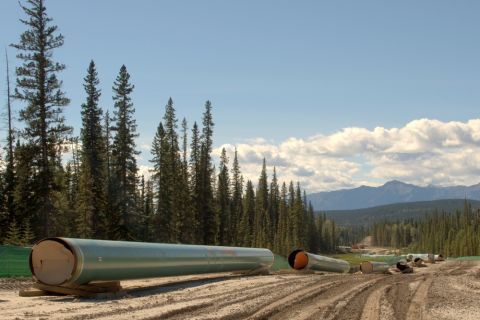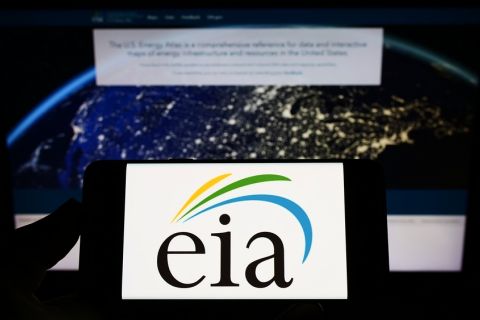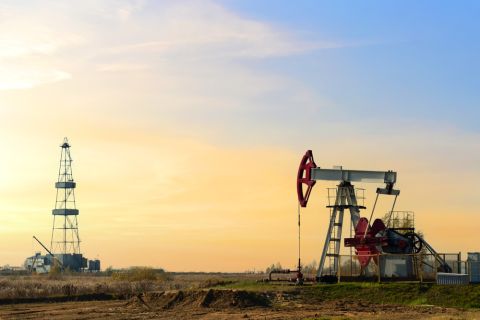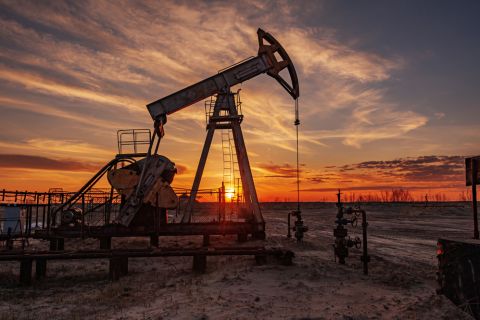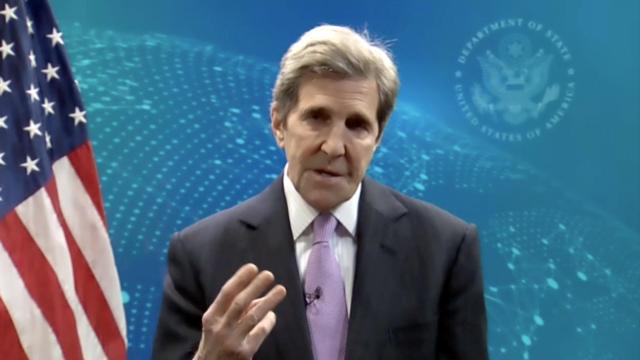
John Kerry, special presidential envoy on climate, presents the Biden administration’s perspective on March 2 at CERAWeek by IHS Markit. (Source: CERAWeek by IHS Markit)
President Joe Biden wants to work with the oil and gas industry on the transition to a cleaner energy future, one of the administration’s top climate officials said on March 2.
But John Kerry, Biden’s special presidential envoy on climate, also warned that the administration would be moving forward aggressively in its plan to reduce greenhouse emissions and further, efforts to resist the energy transition were bound to fail.
“There still is resistance to this transformation and that’s something we really can’t afford very much anymore,” he said during his CERAWeek by IHS Markit discussion on March 2 with Ernest Moniz, CEO of the Energy Futures Initiative and former secretary of energy.
Gathering Pledges
The Biden administration is counting on the former secretary of state to secure emission reduction promises from major emitting countries prior to the 2021 United Nations Climate Change Conference, also known as COP26, in Glasgow, Scotland, in November 2021. A virtual summit of the world’s major emitting nations, including China, Russia and India, will take place on April 22.
“We will specifically be asking all of the major emitter nations to raise their ambition as we go to Glasgow,” Kerry said. “Even if we did everything that every country set out to do in the Paris agreement—and we’re not—the earth’s temperature is predicted to rise by 3.7 degrees [Fahrenheit]. That’s obviously catastrophic.”
Though pressed by Moniz, Kerry declined to reveal plans for the U.S. national defined contribution other than to confirm that it will be aggressive, meaning that this country will pursue harsher reductions in emissions than those required in the Paris accord.
‘Read the Tea Leaves’
Kerry said bosses of oil and gas companies couldn’t help but see the future unfold if they were to “read the tea leaves of the spreadsheets.”
“You already see that people are going to be buying less gas in the future,” he said. “They’re going to be moving to electric vehicles. President Biden is going to be building 500,000 charging stations across the country. He’s going to be rolling out, hopefully fast, the transformation of 500,000 school buses to electric buses.”
The phenomenon of growing demand for clean energy and lessening demand for fossil fuels will accelerate over time, Kerry said, leaving oil and gas executives to ponder where revenue will come from and what to do with potentially stranded assets.
The trend may be growing but it is not universal. A quick glance at a list of cities rated by friendliness to electric vehicles bears that out. A survey by Austin, Texas-based LawnStarter found that California was home to eight of the top 10 and 21 of the top 25 best cities to own an electric vehicle.
And the worst city for electric cars of the 200 surveyed? Midland, Texas. Seems that denizens of the heart of the Permian Basin oil- and gas-producing behemoth are fond of their gasoline- and diesel-powered transport.
“Some people are, obviously, fighting to hold off that inevitability, but that fight is, I think, useless and you’re going to wind up on the wrong side of this battle,” he told Moniz. “What they ought to be doing is figuring out, ‘how do we become, not an oil and gas company, but … an energy company?’”
Seat at the Table
Some companies will tackle the issues of continuing to produce oil and gas while reducing emissions of carbon and methane, and move aggressively into the energy transition, Kerry said. Others, though, will continue to fight over ever-diminishing market share.
The administration sees fossil fuel production as an essential component of its all-of-the-above energy strategy, which is why the oil and gas sector should have a seat at the table.
“If you’re involved as an oil and gas company today, you’ve got this incredible infrastructure,” he said. “You have the ability to move and transport hydrogen. There are all kinds of ways to transition and to accelerate this transition, which we need to do.”
Recommended Reading
Imperial Expects TMX to Tighten Differentials, Raise Heavy Crude Prices
2024-02-06 - Imperial Oil expects the completion of the Trans Mountain Pipeline expansion to tighten WCS and WTI light and heavy oil differentials and boost its access to more lucrative markets in 2024.
US Gulf Coast Heavy Crude Oil Prices Firm as Supplies Tighten
2024-04-10 - Pushing up heavy crude prices are falling oil exports from Mexico, the potential for resumption of sanctions on Venezuelan crude, the imminent startup of a Canadian pipeline and continued output cuts by OPEC+.
EIA: Oil Prices Could Move Up as Global Tensions Threaten Crude Supply
2024-02-07 - Geopolitical tensions in the Middle East and ongoing risks that threaten global supply have experts questioning where oil prices will move next.
The Secret to Record US Oil Output? Drilling Efficiencies—EIA
2024-03-06 - Advances in horizontal drilling and fracking technologies are yielding more efficient oil wells in the U.S. even as the rig count plummets, the Energy Information Administration reported.
What's Affecting Oil Prices This Week? (March 11, 2024)
2024-03-11 - Stratas Advisors expects oil prices to move higher in the middle of the year, but for the upcoming week, there is no impetus for prices to raise.


